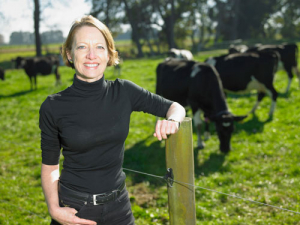Destocking is now being offered as the panacea to environmental woes, and hence a goal for the country, without examination of impacts or alternatives. Nor is the issue of climatic variability being considered; a region once ‘summer safe’ or ‘winter dry’ may be no longer.
Of even more importance is the starting point: destock from what? And did the high stocking rate mean animals were under pressure for feed? And, of course, what is the milk price and the cost of importing food to the milking platform.
The research that started the discussion was a masters thesis from the University of Waikato. Through financial and biological models it investigated destocking, nitrogen loss and return on capital (RoC).
The RoC from the farms involved was reported as 2.5 to 9.0% after destocking. However, RoC is not the same thing as cashflow, which is what banks require in order to feel confidence in supporting mortgages.
An analysis of DairyNZ’s Economic Farm Survey data by Ian Williams of Pioneer indicates that over the last 12 years (since the 2005-06 season to 2016-17) average profit per hectare, return on assets, and equity growth has been higher for system 4-5 (inputs and high stocking rate) than 1-2 (all grass and low stocking rate). Closing term debt per kgMS has been lower for system 4-5 than 1-2.
Economically the higher stocking rate systems have paid off.
However, economics is not the same thing as environment.
The Waikato study reported a reduction in nitrogen leaching associated with destocking and acknowledged that some of the decrease was due to a change in the Overseer model used to make the calculation.
Overseer undergoes constant refinement in an attempt to improve its operation.
But a big component of what happens to nitrogen in a farming system still depends on the farmer. Motu Economic Research estimates only half of the variability depends on the factors entered into the model by the operator.
Good farmers make the difference.
The 2016-17 Sustainability Report from Fonterra’s experts, for a system 5 farm in South Waikato, shows three-times the district milksolid production per hectare, but half the nitrogen loss.
Maize silage and annual ryegrass grown on a support block, plus a herd shelter with wood chips, allows capture of a large percentage of nutrients through good management.
All ‘compost’ is returned to the support block where the soil organic matter has increased from 8 to 10%, despite being under constant cropping for a decade. Dry matter yield from this support block has been measured at 28-30 tonnes/ha/year versus 17t/ha on the milking platform.
High energy supplements, which include tapioca, PKE and whatever else makes sense nutritionally and economically, are fed in the shelter.
The animals move themselves from pasture to shelter (when the automatic gate releases) at their own pace, which reduces incidence of lameness.
In this system the animals can be fed through drought and flood.
They are cooler in summer and off pasture in times of torrential downpours. Calving cows can be kept in at night.
All factors reduce stress for the farmer.
But paying for the facilities takes income, which Ian Williams has shown is higher on average from high input farms than all grass farms.
Destocking a farm where animals are fed well and effluent management is efficient would result in loss of income for both the farmer and the country and would not necessarily improve environmental outcomes.
Good farmers will work out the best option for their land if given the chance. But the next generation of good farmers simply won’t come into the industry if they have to follow a recipe. Good farmers want to make a difference.
• Dr Jacqueline Rowarth CNZM CRSNZ HFNZIAHS has a PhD in soil science and has been analysing agri-environment interaction for several decades. She has a 5% shareholding in a 56ha dairy farm in Waikato.









